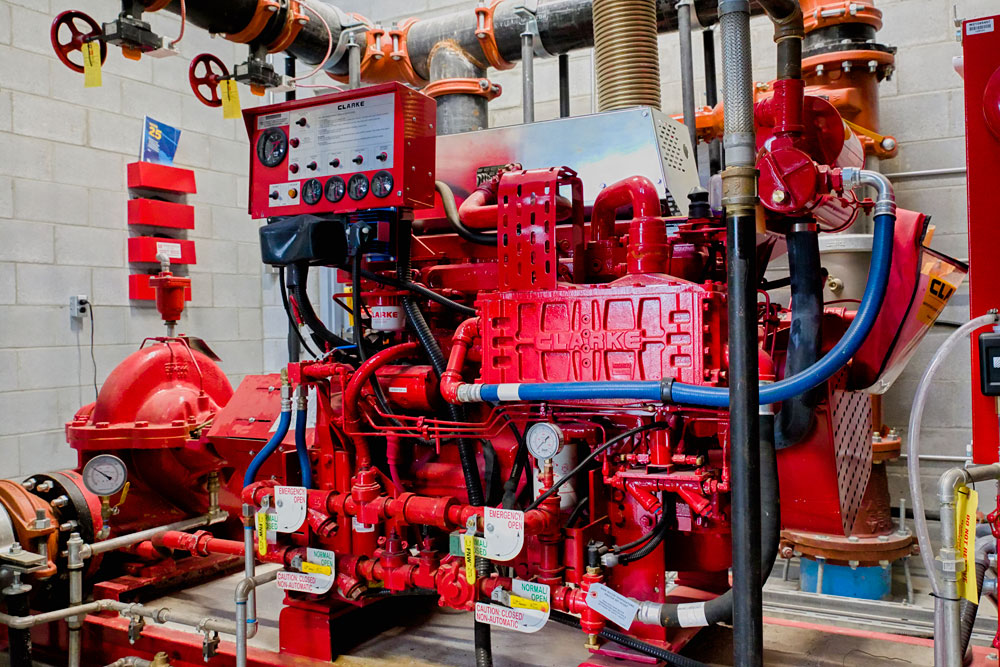Fire safety is an extremely important aspect in the protection of life, property and the environment. One of the most important elements in modern fire protection systems are fire pumping stations. These advanced installations provide a reliable supply of water at the right pressure to fire extinguishing systems, enabling an effective response in the event of a threat. In this article, we explain how fire pumping stations work, what types there are, and why proper maintenance and design are essential for their effectiveness.

What are the basic functions of fire pumping stations in fire protection systems?
Fire pumping stations play a strategic role in fire protection systems. Their task is to ensure that sprinkler systems, hydrants or other fire extinguishing devices have access to water at the appropriate pressure. In practice, this means that when a fire is detected, the system immediately starts the pumping station, which ensures a continuous flow of water. The basic functions of the pumping station include:
- [u]sprinkler system power supply[/u] – when a fire is detected, sprinklers automatically release water, which helps to quickly extinguish the fire;
- [u]maintaining pressure in hydrants[/u] – thanks to the pumping stations, firefighters have access to water under constant pressure, which significantly increases the effectiveness of rescue operations;
- [u]protection of life and property[/u] – the effectiveness of the fire extinguishing system is directly dependent on the operation of the pumping station.
In the context of modern buildings and industrial facilities, the importance of fire pumping stations cannot be overestimated. They are an indispensable element that helps minimize the risk of material losses and life hazards.
What types of fire pumping stations are available on the market?
The market offers a variety of solutions tailored to the specific needs of users. The selection of the appropriate type of pumping station depends on many factors, such as the size of the facility, the required water pressure or local regulations. We list the following types of fire pumping stations:
- [u]wet pumping stations[/u] – most commonly used in residential and commercial buildings. They are supplied with water directly from the water supply network or tanks;
- [u]dry pumping stations[/u] – designed for use in regions with low temperatures. Water is supplied to the system only after a fire is detected;
- [u]pumping stations powered by combustion engines[/u] – they ensure independence from external energy sources, and this feature is particularly important in the event of a power failure;
- [u]electric pumping stations[/u] – the most popular in modern installations. They are characterized by quiet operation and easy integration with monitoring systems.
Each type of pumping station requires precise design that takes into account the specific requirements of the user and compliance with regulations regarding fire protection systems.
Fire pumping stations are an essential element of every fire protection system. They ensure the safety of life and property by supplying water at the right pressure to fire extinguishing devices. Selecting the right type of pumping station, its correct installation and regular servicing are actions that allow you to create an effective system. Thanks to modern technologies and a professional approach, you can create a reliable solution that will meet the expectations of even the most demanding users. Remember that in crisis situations, it is the technical efficiency of the system that determines the effectiveness of the response.
